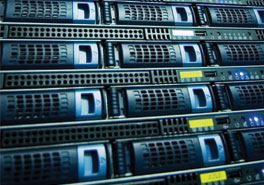Has it been three to four years since you last refreshed your servers? Are your users frustrated because of slow workstations? Before you go out and purchase all new servers and workstations, there are factors to consider to ensure your refresh is done efficiently, strategically and economically.
In the first part of our IT Refresh series, we discussed how to know if your practice or firm is ready for a refresh, what the typical lifespan is of different technologies and what’s at stake if you don’t refresh or upgrade your equipment.
Today, we explore three imperative considerations for your practice or firm’s hardware refresh.
1. Technology interactions
In healthcare, providers are trained to recognize the potential for adverse reactions with certain medications. When improperly mixed, medications can wreak havoc on the human body, causing a host of new issues that need to be treated.
Similarly, changing technology without evaluating its interactions with the rest of the network can cause unnecessary chaos in your IT environment.
When planning for a hardware upgrade, evaluate how each element plays in to the greater picture. IT systems are often a series of bottlenecks. Something as simple as upgrading one part, such as a server or network equipment, will move that bottleneck elsewhere which can lead to reduced availability or performance, or may simply limit the benefits of the additional capital investments.
In the case of software, many updates require additional storage or processing capabilities. Will updating your software mean you must also update the server it runs on? Be sure you know the answer before you update.
Networking hardware is also very closely tied together. Interactions between devices are extremely complex, often relying on not just physical links but the interactions of very specific features. Not considering these interactions when replacing a piece of equipment can reduce functionality, performance or availability that may require additional unplanned purchases to correct.
Work with your IT partner to determine how any software or hardware upgrade might affect your greater environment.
2. IT planning roadmap
Too often IT decisions are reactive instead of proactive. Equipment is replaced only after it breaks or quits working. When we’re reactive, we’re never able to recognize the full benefit of a strategic IT environment.
When you’re planning your technology upgrades, consider how it plays into your 18-36 month IT roadmap. Your roadmap should guide your decisions well before they become reactive.
For instance, perhaps you desire to go to a virtualized architecture, which has the benefits of being more agile to business needs and allows features like disaster recovery. In the next 6 months, you also plan to implement a new PACs system. By creating a roadmap, you know what to plan for and can make adjustments to the virtual environment to accommodate for the PACs system requirements, such as additional storage. If proper planning had not been taken, a simple PACs system integration could have required the addition of compute, replacement of switches and routers, and other costly investments that could have been avoided.
On top of saving your practice money, a well laid out, strategic IT plan allows you to make decisions that will save your practice time and get the most out of your technology.
If your practice or firm doesn’t have an IT roadmap, download a template here.
3. Capital vs. operating expenses
Firms and practices are being forced to reevaluate their expenses by heightened regulations and decreased reimbursements. This often means that practices and firms delay their hardware and software upgrades for as long as they can. This creates vulnerabilities and risks.
Thanks to technology solutions like cloud computing and Software-as-a-Service (SaaS), physician practices experience IT as an operating expense rather than a capital cost.
When your practice or firm is considering server upgrades, new software implementations or technology updates, evaluate if a cloud-based solution may be beneficial. The cloud can alleviate some pains caused by large capital investments in servers, storage or software.
A transition from capital to operating expenses can free up budget to grow your practice, invest in more advanced treatment options or just run leaner.
Carefully considering these three factors will ensure your upgrade is both strategic and successful, positioning your practice well for the future.
Next week we’ll explore a key topic we’re often asked about: the total cost of ownership (TCO) of your IT environment. We’ll provide an in-depth analysis of capital expenses and how it compares to operating expenses to help you further assess what’s right for your organization.
